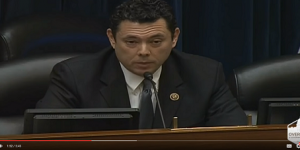The Washington Examiner — Washington-area schools are facing budget crises as a result of an influx of immigrant students, according to a recent report.
Since the 2005-06 school year, the percent of students enrolled in English proficiency classes has increased by an average of nearly 70 percent across seven school districts in the D.C. metro area, according to a report by the advocacy group, Federation for American Immigration Reform, which promotes tighter border security, an end to illegal immigration and reduced levels of legal immigration.
Those classes cost an average of about one quarter of each district’s budget, and the chunk is getting larger as new students, many of them illegal immigrants or children of illegal immigrants, enroll in English-as-a-second-language classes.
“Education programs are being cut,” said the report’s author, Eric Ruark. “We’re not saying that [English proficiency classes] are the cause, but it’s certainly taking money away from them.”
However, a policy analyst at the Migration Policy Institute, an independent think tank that tracks international migration and refugee trends, concluded that such a correlation isn’t clear.
“We’ve never documented a negative effect on native English-speaking students,” MPI analyst Sarah Hooker said.
Disproportionate enrollment increases in the English-learner classes is troubling, because non-English speakers can cost up to twice as much as their proficient counterparts, according to the report.
“Education experts have long realized that the cost of educating a student who is not proficient in English far exceeds the amount actually allocated,” the report said.
Additionally, the amount spent on English proficiency classes in the D.C. area is among the top in the country.
Hooker, however, said that school budgets can be similarly strained by other high-cost students, such as those recipients of free and reduced meals from low-income families.
“Local taxpayers are impacted every time there’s an increase in enrollment, but that can be because of migration within the U.S.,” Hooker said. “Schools with populations of high-needs students are harder to finance.”
Ruark counters that most students enrolled in English-learner classes are also low-income, a factor he incorporated in his report.
Taxpayers also quickly feel the costs of high-needs students, as schools are primarily funded by local property taxes and receive little funding from the federal government, according to Ruark. Consequently, immigration affects local governments in ways that are not necessarily reflected at the federal level where policies are made.
“Public school is where this problem is most predominate,” he said.
Federal spending helps, but only to a small degree.
“There is a federal funding stream that has specific requirements related to education for English learner students,” Hooker said. Those dollars are only meant to supplement state and local contributions. Hooker added that taxes paid by illegal immigrants themselves alleviate some of the financial strain.
FAIR counters that the tax contribution by low-income immigrants is not nearly enough to make up the difference.
“It is simply inconceivable that they can pay enough in taxes on that level of income to pay for even one student,” said FAIR spokesman Ira Mehlman. As a result, he said, proficient English speakers may suffer.
“What is likely to happen is that the quality of their education is going to diminish,” Mehlman said. “The resources available won’t be spent on them. It’s an additional burden on schools that are already overburdened.”
Nonetheless, educating non-English speakers, students who will most likely stay in the country and become taxpayers, is crucial, according to Hooker.
“Of course border and immigration policy has an impact on schools,” she said. “But we can only talk about border policy going forward. Education is one of the basic services states have to provide.”




























